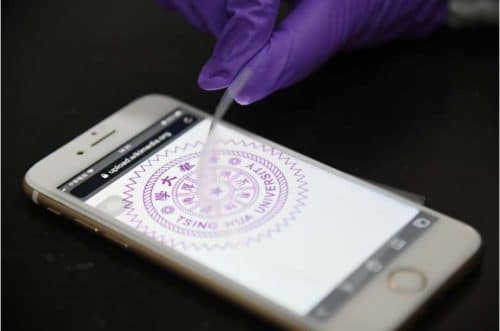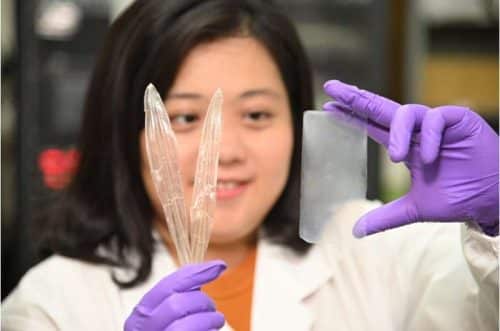The new composite piezoelectric materials are suitable for producing a transparent film that undergoes self-sterilization whenever it’s touched.
Researchers of the Department of Materials Science and Engineering at National Tsing Hua University (NTHU) in Taiwan have developed two composite piezoelectric materials extracted from common waste products.

One is piezoelectric material is a new type of catalyst extracted from discarded rice husks. Researchers say that it is capable of treating industrial wastewater 90 times quicker than the photocatalysts now in use. These conventional photocatalysts require abundant light, and wastewater not being very transparent, reduces the efficiency of the catalyst. To eliminate this problem in mind, the research team led by Professor Jyh-Ming Wu, extracted silicon dioxide from rice husks and then added molybdenum and sulfur to produce a quartz composite piezoelectric material. The material can be injected into a factory’s wastewater pipeline where the pressure generated by the water flow helps to purify the pollution without needing any light. Wu explains that the new material is so effective due to the addition of molybdenum and sulfur during the production process.
The research work has recently been published in the international journals Advanced Materials and Advanced Functional Materials, and their quartz composite material has already received patents in Taiwan and the United States.
The other is a material extracted from discarded squid bones and has been used to produce a self-sanitizing transparent film suitable for use as a cover on mobile phone screens, elevator buttons, door handles, etc.

The researchers demonstrated the film’s sanitizing effect by smearing a sample with Escherichia coli, applying pressure for 25 minutes, then removing the pressure and waiting five minutes. After five repetitions of this procedure, the Escherichia coli was reduced by 76%. According to the team, the chitin used to make this new piezoelectric material can also be extracted from shrimp shells, crab shells and cuttlefish bones, and it can also be manufactured using bionic technology. Due to its suitability for producing a self-sterilizing transparent film for covering screens, such as those used on mobile phones, this new material can play a key role in fighting the spread of infectious diseases.






